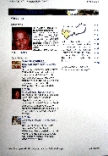
New Websites on the Bulsa
Website of the Bu(i)lsa District
We are happy to announce that, in addition to the Ghana Homepage and
BULUK, there is now another website reporting on the political, social,
economic and cultural conditions in the Bulsa District on the internet. As
the three websites apparently have different intentions and a different
target- readership they should not be regarded as rivals.

On the Ghana Homepage, events from the Bulsa District appear only sporadically and are sometimes difficult to find, but this website is of great value for anyone who wants information about Ghana as a whole or its towns, languages or ethnic groups in the context of modern events. It also has lists of all languages, ethnic groups etc. in Ghana. Until now, BULUK has tried to unite different fields of information for a wide readership and includes recent events (often seen through the eyes of the editors living in Germany), reviews of publications on Buluk and the Bulsa, essays (papers) on Bulsa culture and history and occasionally also poems and short stories written by Bulsa.
Fortunately the new website on the Bulsa District seems to stress those fields of... in which there is some shortcoming (imperfection) in BULUK, namely news about political, economic and social affairs soon after they occur in the Bulsa District. The editors of BULUK must admit that, in this field, the conditions of their “ghanadistricts” colleagues (members of the district assembly?) are in a considerably better position, since they obviously have close contacts to the actors in Bulsa public life. On the other hand, BULUK will extend themes which do not belong to the repertoire of the “ghanadistricts”-website at the expense of reports on political events.
Most valuable in the new website is the presentation of basic data on the Bulsa area and its political, social and economic conditions, for example:
• Physical characteristics (e.g. relief, climate, vegetation, geology, soils)
• Demographic characteristics (e.g. size, density, age structure)
• Environmental situation (e.g. deforestation, desertification, energy)
• Economy (e.g. poverty, employment)
• Social infrastructure (e.g. telecommunication, roads)
• Agricultural sector (e.g. irrigation, food situation, pests, storage, soil fertility, land use methods)
• Educational sector (e.g. Bulsa schools: enrolment, drop-out rates, teachers, textbooks)
• NGOs
• Tourism (Akumcham, Fiisa, Doninga, Feok/Fiok Festival)
• Guest Houses
• Administrative setup (DCE, assembly members) etc.
The editors of BULUK recommend a visit to the District website to whoever is interested in the Bulsa, their land and their institutions.
Materials on Ghana and the Bulsa
www.materialien.com (Franz Kröger)
Every scholar who is getting on in years starts, at some point, to fear that part of his extensive, not-worked-up research data will never be published. How, one day, can some other scholar working in the same field make use of his hosts of fieldnotes and data collections in the form of tables, lists or simply key words without these being put into print? Today, the website is an adequate way to solve his problem. It can give evidence, not only of his previous work, but also about his planned projects.
Many data on the above website are, according to the author’s fieldnotes and sources, edited in German. Usually only the headline is translated into English, but an English abstract for all German articles is planned. Some contributions are in English (e.g. the Buli Language Guide), others, according to the language of the source, are a mixture of German and English passages.
Although some chapters are concerned Ghana as a whole, there is a clear concentration on Northern Ghana. It is hoped that ethnologists and historians in particular, who are planning research projects on the Bulsa, will find some useful data.
• A large number of sources on Bulsa history, found in the relevant archives of Ghana and Britain, are summarised with some interesting quotations (The corresponding sub-chapter on the National Archive of Ghana is, however, still missing).
• Bulsa individual names with English or German translations and explanations are a by-product of the author’s publications (1978 and 2009).
• A list containing ritual elements of sacrifices to Bulsa earth shrines (tanggbana), the result of about 40 participations in sacrifices to a tanggbain between 1973 and 2008, was originally collected for a paper but proved to be too long and detailed to form part of a more theoretical treatise.
• The chronological list of Bulsa history is certainly incomplete and many dates need confirmation by further research.
• The “Bulsa Language Guide” was written to help the author learn Buli and provide him with common phrases useful for everyday life at hand (at his disposal).
Of the more than twenty chapters in the table of contents, only fourteen have been finished at present (2009). Although the coming years will probably bring the completion of more chapters and perhaps even new chapters, this website as a whole will certainly never be completed.